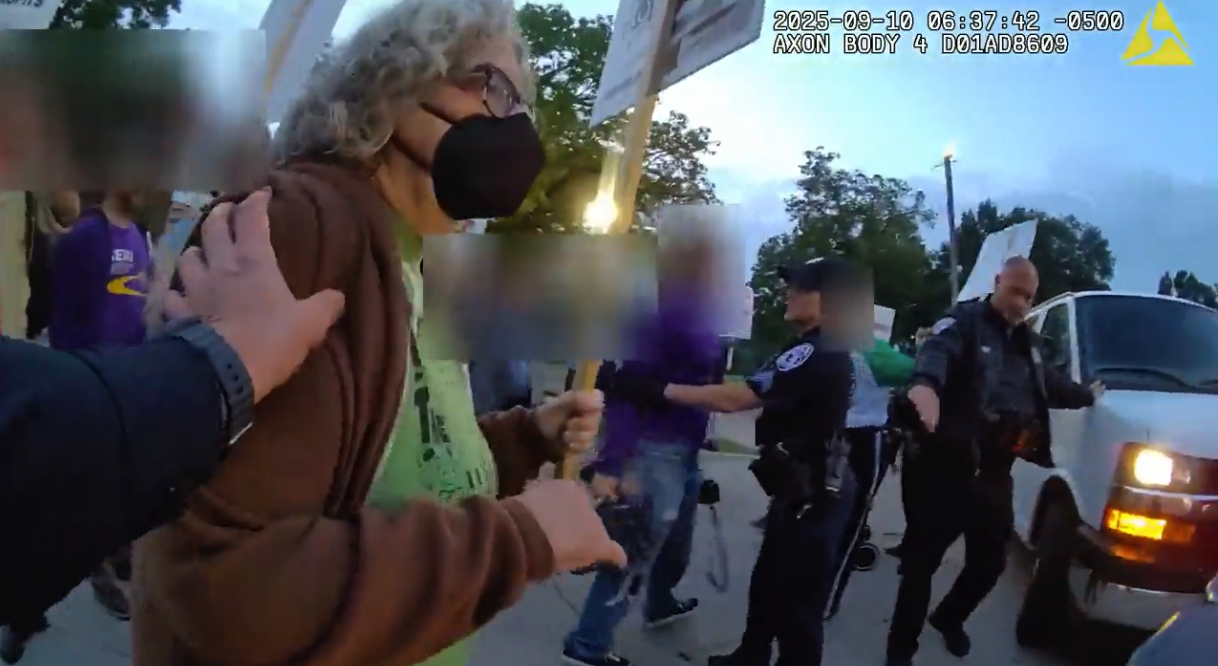U of M officer broke protestor's ribs during picket line assault, lawsuit alleges
"People have the right to support striking workers without fear of being hurt by the police,” Trish Kanous said. "I hope that by coming forward, I can help ensure this doesn't happen to someone else who is simply trying to exercise their constitutional rights."

*Disclaimer: Lawsuit complaints are based off one side’s interpretation of events. They should not be considered 100% factual by the public as they are only accusations. Many lawsuits end without a trial or an admittance of guilt by any parties listed in the complaint. Any accusations in the below story come from court documents unless expressly noted.*
MINNEAPOLIS - A University of Minnesota police officer severely injured a woman earlier this year while she was in a union picket line on the school’s Twin Cities campus, according to a lawsuit filed earlier this month.
University of Minnesota Police Department Sgt. Matthew Quast and the U of M regents are named in the lawsuit, filed by Trish Kanous in Hennepin County District Court.
Quast can be seen in body camera footage pushing Kanous to the ground while she picketed in support of the Teamsters Local 320 strike across multiple U of M campuses on Sept. 10.
Quast can be heard telling picketers to stop resisting as he pushed her to the ground while she stood in the picket line.
Watch the body camera footage below:
Body camera footage of Sgt. Matthew Quast pushing a woman to the ground, breaking four of her ribs.
"This was a gratuitous use of force," said Tim Phillips, who represents Kanous in the lawsuit. "Ms. Kanous posed no threat to Officer Quast or anyone else that day."
Kanous suffered a subdural hematoma and four fractured ribs as a result of Quast’s assault, despite not being suspected of a crime or threatening others, according to her complaint against the university and its officer.
The U of M regents denied the allegations in its answer to Kanous’ complaint and asked for the lawsuit to be dismissed.
“The conduct of any university employees with respect to plaintiff was authorized by law, was reasonable under the circumstances and was undertaken in good faith and in the absence of malice or ill will,” wrote Senior Associate General Counsel for the U of M Lisa Beane in the school’s answer.
The September strike by more than 1,400 Teamster custodians, maintenance staff and food service workers sought a 3.5% wage increase and was eventually ended after Willie Nelson contacted Gov. Tim Walz to advocate for the union’s demands.
"People have the right to support striking workers without fear of being hurt by the police,” Kanous said. "I hope that by coming forward, I can help ensure this doesn't happen to someone else who is simply trying to exercise their constitutional rights."
Kanous accuses Quast of using excessive and retaliatory force in violation of her constitutional rights and both Quast and the U of M regents of battery.
A proposed trial start date is scheduled for Sept. 28, 2026.
Law enforcement has a long history of violent strike breaking tactics throughout the United States and this is not the first time Teamsters have dealt with anti-unionist violence by local police in the Twin Cities.
In 1934, local Minneapolis cops fired on Teamsters, killing two and injuring at least 65, during a strike which sought to unionize local truck drivers.
Law enforcement lured the unarmed Teamsters with a fake “scab truck” to a street corner and began shooting at the unionists with shotguns.
“Police took direct aim at the pickets and fired to kill. Physical safety of police was at no time endangered. No weapons were in possession of the pickets in the truck. At no time did the pickets attack the police,” according to an investigation by then Minnesota Gov. Floyd Olson, a Farmer-Labor party member.




Comments ()